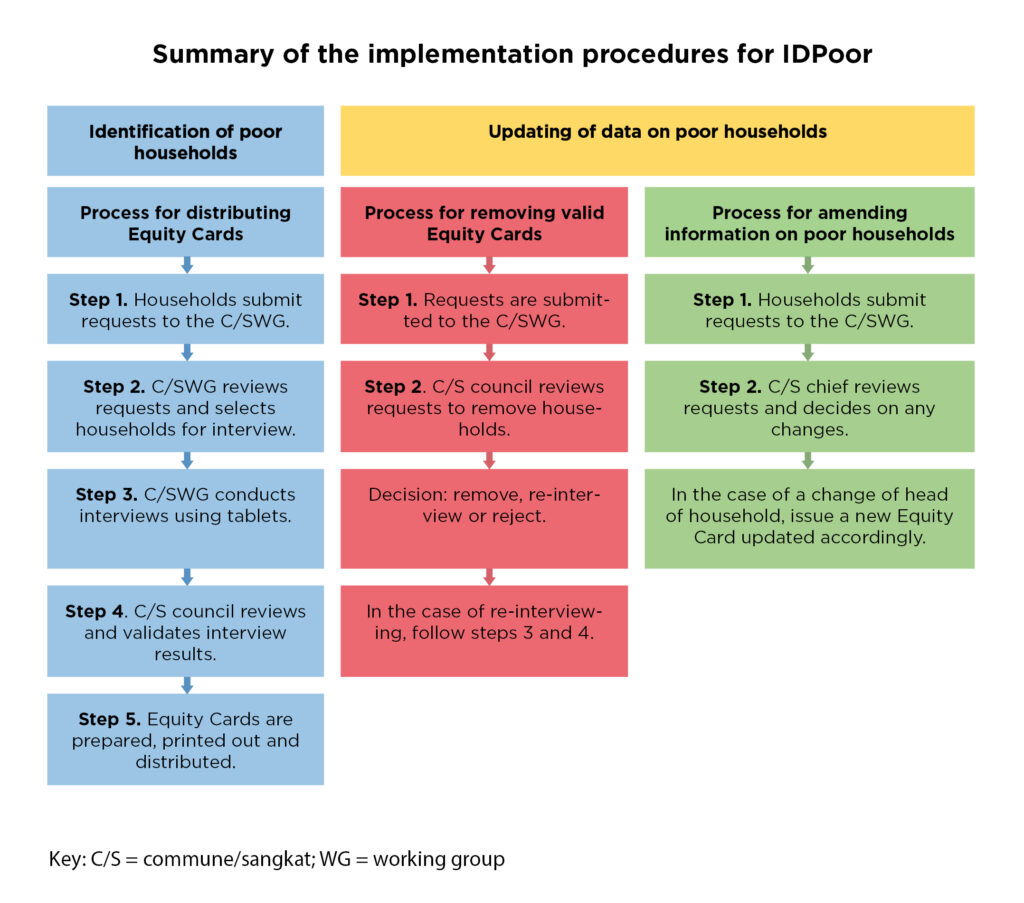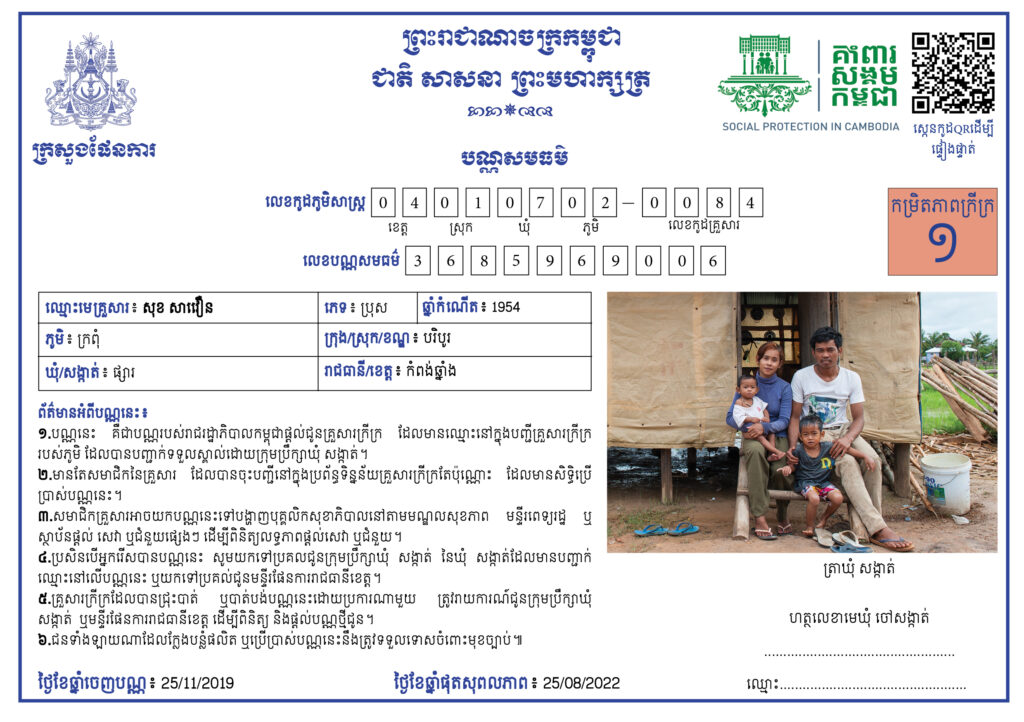About
The Identification of Poor Households Programme (IDPoor) is part of the Government of the Kingdom of Cambodia’s ongoing efforts to reduce poverty. Being the government’s mandatory standard tool for targeting pro-poor measures in the country, the programme provides regularly updated information on poor and at-risk households to a large number of Government and non-governmental agencies to help them target services and social assistance.
The IDPoor Programme gratefully acknowledges the longstanding support to its implementation from the German Federal Ministry for Economic Cooperation and Development (BMZ) and the Australian Department of Foreign Affairs and Trade, implemented by Deutsche Gesellschaft für Internationale Zusammenarbeit (GIZ) GmbH and the United Nations Development Programme (UNDP).
Objective
The IDPoor Programme’s main objectives are:
- Accurately identify poor households and at-risk households by means of a unified procedure.
- Produce reports and provide data on poor households and at-risk households for each geographical area.
- Provide Equity Cards to poor households as a basis for accessing social assistance services.
By using IDPoor data for targeting services and assistance to poor households and at-risk households, local authorities and local populations will also more easily accept your organisation’s selection of beneficiaries, because the Lists of Poor Households and at-risk households have already been approved and accepted by them.
IDPoor History
IDPoor was established in 2006 within the Ministry of Planning. In order to effectively implement IDPoor, the Government promulgated Sub-Decree 291 on Identification of Poor Households in December 2011. This Sub-Decree regulates the management and implementation of the identification of poor households procedure, and the utilisation of poor household data. Based on this Sub-Decree IDPoor is the mandatory standard tool for all organization who want to target social services to poor households and at-risk households in Cambodia.
In the past, poor households were identified in 8-9 provinces per year. The data of poor households was updated regularly every 3 years. Responding to the Covid-19 pandemic, the Government of the Kingdom of Cambodia instructed the MoP to implement identification of poor households continuously and on-demand nationwide in 2020. Implementing the IDPoor procedure using digital equipment instead of paper works increases the effectiveness and efficiency to collect information. The IDPoor data is provided to the government, development partners, and NGOs through APIs or the IDPoor website for social protection interventions to support poor households. In 2022 IDPoor has been extended to also identify households at risk of falling into poverty.
Procedure for identifying poor households
IDPoor is essentially a community-driven proxy means test that is implemented by Commune/Sangkat Working Groups on demand to identify households living beyond the poverty line and households having problems to sustain their livelihood due to special circumstances. The Ministry of Planning provides training and technical support to Capital and Provincial Departments of Planning and the coordination team of the town, district, and Khan. Then they provide training and technical support to implementers of the IDPoor process in each commune. Please find information on the different steps of the IDPoor implementation in the implementation manual and here:

All households identified as poor are issued with Equity Cards. These cards enable poor households to receive free services and assistance, and help service providers to quickly verify the identity of poor household members in order to provide services to them.

Questionnaire
In order to ensure that the process is carried out in the same way, and to the same standard, in all areas, the identification of poor households and at-risk household in Cambodia must use the Ministry of Planning’s standard questionnaire. The questionnaire consists of a set of proxy indicators for poverty, which are mainly based on easily observable and verifiable household characteristics such as assets, household size or education status , but also include a number of other indicators that do not directly impact a household’s poverty score (special circumstances), but that can be the grounds for reconsidering a household’s poverty category.
Poverty Categories
There are four categories to which households can be assigned:
- Poor Level 1 (very poor)
- Poor Level 2 (poor)
- At-risk
- Non-poor
These categories are assigned based on the questionnaire scores and consideration of vulnerabilties and special circumstances of households.
At-risk households
Households who are at risk of falling into poverty are also identified by Commune/Sangkat Working Groups using the same mechanism and questionnaire that are used for the IDPoor Identification. Households considered to be at risk of falling into poverty are those who live slightly above the poverty line and have at least one of the following vulnerabilities:
- At least one household member with a moderate or severe disability
- At least one household member older than 60 years
- At least one household member younger than 2 years
- All household members younger than 18 years
- Single female headed households
Households that are identified as at-risk of falling into poverty do not receive an Equity card. Their status is valid for three years.
